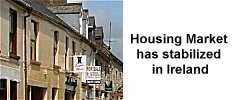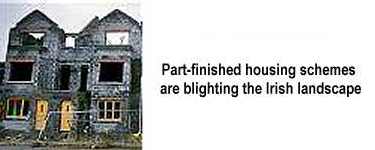The Irish people do not need any reminding of the devastating effect that a property bubble can have. Back in 2008 when the property market in Ireland imploded the Irish banks had to go cap-in-hand to the Government for support. ‘Back us or the ATMs will stop working’ was the blunt message offered to the Irish politicians of the time. They duly obliged by underwriting the deposits held by the banks, preventing any mass withdrawal of funds by the public and financial institutions.

The problem with the bank guarantee was that, while it kept the ATMs operating it also underwrote the funds held by the massive institutional investors, including those in France and Germany. When the banks were eventually nationalized the bonds held by the European investors became payable by the Irish State. ‘Burn the Bondholders’ was one of the famous slogans used in the run up to the 2011 election. To date there has been little or no evidence of that happening with the EU/IMF/ECB troika protecting their own interests while drip-feeding enough finance into the Irish economy to keep the lights on.
The situation has stabilized since then but at some cost. Unemployment remains stubbornly above 14%. Job opportunities are limited with massive emigration the escape valve. Taxation has been greatly increased to the point where even those most enthusiastic in engaging austerity are suggesting that a financial stimulus and not more taxation is now what is required.
Against this backdrop the Irish property market has suffered one of the greatest collapses in modern history. Only Dubai has suffered a bigger recent loss as the value of houses and apartments plummeted by anywhere between 40% and 60% depending on the report that is cited. Banks of course, are now much more stringent in their lending policies, anxious to avoid the mistakes of the past. But it may be a case of ‘a short memory’ for some people.
It has long been suspected that the value of houses in Dublin has dropped too much, with no such reservations about the price falls in rural locations. Tiny little towns with half-built housing estates and a dwindling population are a recipe for further house price falls. But in Dublin there are enclaves and districts that have seen pretty hefty gains. A recent Myhome.ie report indicates that prices for property in the capital city are 26% above the national average price of 191,000 Euro (US$258,000).

The same report indicates that nationally house prices fell by 7.8% over the last year, which is a lot better than the 14.3% recorded the previous year. But Dublin prices have soared by 10.6% over the last year according to the Central Statistics Office (CSO), the price increase fuelled mainly by a lack of housing stock.
Could it be that massive house and apartment building will again get under way in the city? This seems fanciful at the moment but there Are signs of new construction work being undertaken in Dublin. With the population of Ireland expected to grow by at least 10% over the next 15 years it is estimated that 20,000 new housing units are needed annually to keep pace with the demand. During the boom years upwards of 40,000 housing units were being constructed. This year the likely total will be about 6000.
Until the supply of houses increase in Dublin city it seems likely that prices will continue to rise. But any sudden shift in sentiment or a dramatic increase in supply (such a as a major spate of bank repossessions and then fire-sales) could yet see a repeat of the recent pain for Dublin house-owners.
A short memory indeed.
 Michael Green is Manager of The Information about Ireland Site
Michael Green is Manager of The Information about Ireland Site